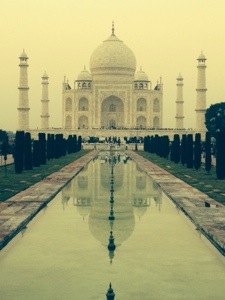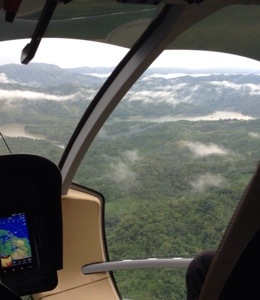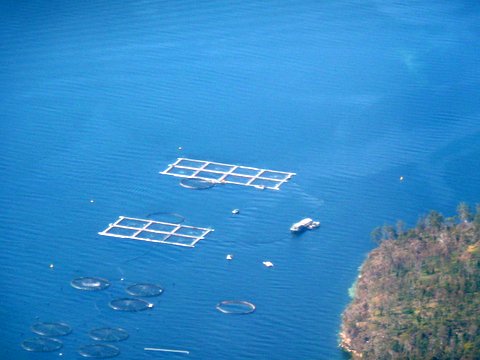
by Loti | Jan 20, 2014 | Animals, Australia, Birds, Endangered Species, Environment, Flowers, Food, Health, Insects, Plants
Adelaide, Australia. Within walking distance of our hotel, I discover a magical botanical garden. Free to the public, in the middle of downtown, this 125 acre oasis includes a rainforest under glass. The forest is housed in the largest single span greenhouse in the Southern Hemisphere (for those of us geography challenged, the Southern Hemisphere is all the land below the equator including Anartica, Australia, most of South America and a third of Africa.) Entering the glass 2 story structure, the air is misty and buzzing with activity, from birds, insects, plants growing and 1,000 misting nozzles. I have always heard how important the rainforest (defined as a dense forest receiving 90-180 inches of annual rainfall) is to our global ecosystem, but I had no idea 50% of the world’s plants and animals live in them. And many of our medicines (some anti cancer and leukemia drugs for starters) come from rainforest plants. Yet we are losing 1-2 (and some biologists estimate the number is closer to 100) animal and plant species a day to extinction primarily from deforestation. Wow! So what can we do? I plan on learning more about the issues and possible solutions by joining a conservation club, visiting rain forests whenever I can and taking steps to recycle and be nice to our Earth. Once a species is gone, we can never get it back. And that sounds so...

by Loti | Nov 24, 2013 | Architecture, Environment, India, Wonder of the World, World heritage Sites
India. Mark Twain, after visiting the Taj Mahal, said the world is split in two parts-those that have seen the beautiful monument and those that have not. I am now one of the lucky ones. Along with approximately 50,000 other visitors a day. Considered by many (including me) to be the most beautiful building in the world, this World Heritage Site is at risk of being damaged by modern pollution. Built in 1632 with no electricity, power tools, trucks or other modern day conveniences, it took 20,000 workers (building and crafting 24 hours a day) over 20 years to build. It completely boggles my mind! Yet in the last century, air pollution has been eating away at the white marble exterior and water pollution threatens the foundations on which the mausoleum is built. Pollution monitoring devices are everywhere, no gas powered vehicles are allowed within a half mile of the Taj Mahal and nearby coal based factories have been closed or converted to natural gas. But alas, all the pollution monitoring devices don’t work without electricity, which was off routinely for 6-10 hours a day due to power outages during our visit. And when the power is out, diesel generators kick on to supply power which just adds to the pollution. Old meets new. With no easy solutions, it is an interesting juxtaposition (my lexicon for the...

by Loti | Oct 12, 2013 | Conquering Fear, Environment, Panama, Plants, Uncategorized
Panama. It is hard for me to comprehend 52 million gallons of water. But it is the amount of water required to move one ship (just one) through the lock system of the Panama Canal. With approximately 40 ships going thru each day, 365 days a year, just do the math. A staggering quantity considering the water is not recycled and ends up in the ocean. So where does it all come from? Is it fresh water or salt? How is it replenished? A lot of questions tumbling thru my brain as we pull into the lock behind a large container ship and the water starts pouring in behind massive gates. And a little unnerving. The water, it turns out, comes from 1.5 million hectares of protected rainforest which surrounds the canal. The day after our partial canal transit by boat, I find myself in one of four cool helicopters (reminding me of the TV show MASH) flying over the rainforest in formation. The water collects in the Gaton Lake (partially seen in the photo) and is released into the ocean (all 52 million gallons) each time a transit is made. Without the forest, there would be no canal. Without the canal, there might be no rainforest since deforestation is occurring at a rapid pace. For me, it is an amazing feat of nature and man working together to provide an efficient trade route between the Caribbean/Atlantic and the Pacific...

by Loti | Aug 13, 2013 | Animals, Australia, Environment, Food, Health
Australia. The view of a salmon farm from our single engine plane high above the waters of Tasmania looks pretty cool and well, pristine. So why when I ask the restaurant server “is the salmon farmed or wild” do I order something else if the answer is farmed? On researching, it turns out to be a hotly debated subject with lots of emotionally charged opinions including my own. As the fastest growing food production segment in the world (wow, I had no idea) with over 1.5 million tonnes (a tonne = 2,204 pounds) produced annually, it’s a lot of salmon! So what’s wrong with ocean farmed salmon? Well, according to Whole Foods, nothing as long as it is farmed to their 36 page Quality Standard guide. OK, so if not, higher levels of PCB’s, lower levels of Omega 3’s, residual antibiotics used to fight disease and the use of genetically modified feed by some farmers for starters. And what about environmental concerns? The spread of disease into wild populations, pollution, and the death of thousands of sea lions and seals by drowning in the netting or being killed by farmers protecting their fish are real issues. The good news, however, is the industry is improving dramatically and has started farming in inland closed system tanks which eliminate many of the problems. So next time I eat out, I’ll just stick with wild fish or maybe ask if the farmed fish is ocean raised or inland tank raised. Can’t wait to see the reaction to that question! ...





